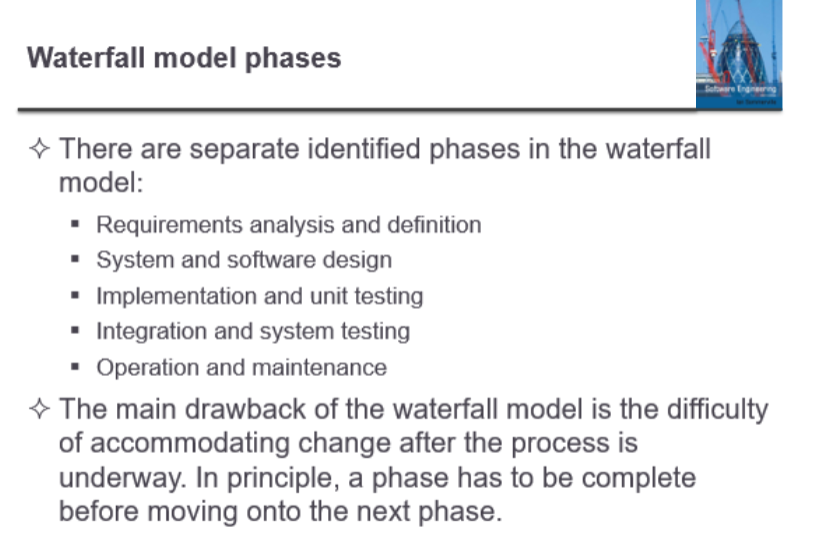What are the phases of the waterfall model and what are its main drawbacks?

Understand the Problem
The question is asking for an overview of the waterfall model in software engineering, specifically focusing on its phases and drawbacks. The key concepts include the distinct phases of the waterfall model and the challenges associated with accommodating changes during the process.
Answer
Phases: Requirements, Design, Implementation, Testing, Maintenance. Drawback: Inflexibility for changes.
The phases of the Waterfall model are: Requirements Analysis and Definition, System and Software Design, Implementation and Unit Testing, Integration and System Testing, Operation and Maintenance. The main drawback is the difficulty of accommodating changes once a process is underway.
Answer for screen readers
The phases of the Waterfall model are: Requirements Analysis and Definition, System and Software Design, Implementation and Unit Testing, Integration and System Testing, Operation and Maintenance. The main drawback is the difficulty of accommodating changes once a process is underway.
More Information
The Waterfall model is a linear and sequential approach to software development, making it less adaptable to changes, which can be a significant limitation in dynamic environments.
Tips
A common mistake is neglecting the strict sequential flow, which does not allow for revisiting phases without restarting the process.
Sources
- Waterfall Methodology for Project Management - Atlassian - atlassian.com
- Waterfall Model - Software Engineering - GeeksforGeeks - geeksforgeeks.org
- The 5 Phases of Waterfall Project Management - Profit.co - profit.co
AI-generated content may contain errors. Please verify critical information